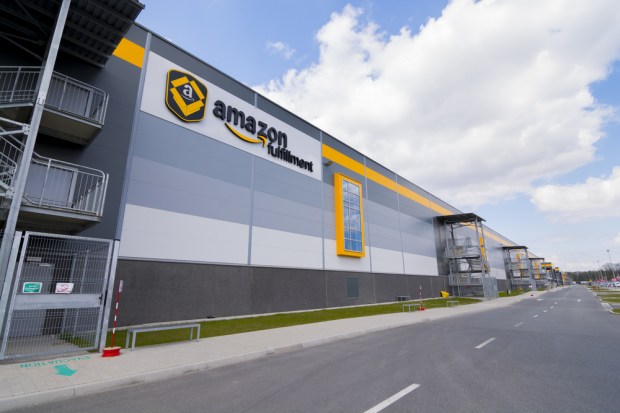You Could Do Worse Than Quit A Warehouse Job At Amazon

Amazon puts significant effort toward loyalty, as shown recently by its push to extend Prime discounts to Whole Foods shoppers, a move designed to increase revenue and keep consumers away from competitors.
So, it may come as a surprise to some people that the eCommerce operator also tries to build loyalty — in this case, among its labor force — by encouraging employees to quit.
The program is called “The Offer.”
The vaguely mystical phrase seems to fit a company where the hours are typically very long, according to accounts from ex-employees and other reports, and that often comes across not so much as a mere retailer or sprawling online marketplace or major web services provider, but as a technologically advanced organization that is changing business, culture and society.
“The Offer” applies to workers in the warehouses that make up Amazon’s distribution network — the fast-moving fulfillment operation that makes possible same- and one-day deliveries, among the top features of Prime — along with some customer service employees, according to reports. Amazon, according to its latest annual report, employs some 560,000 people, of whom at least 90,000 work in the company’s fulfillment centers, according to estimates and Amazon figures. North America is home to more than 70 fulfillment centers, which are increasingly using robots to help with picking, sorting and shipping.
Once per year, “The Offer” pays fulfillment employees what amounts to a bonus to quit. The newest employees can get $2,000, with the amount increasing with seniority and maxing out at $5,000. (Employees must accrue a year of service to take part.) The catch? Employees who accept pay-to-quit checks cannot ever work at Amazon again — another sign of how the 23-year-old eCommerce company puts a high premium on loyalty of all types.
Amazon inherited the program from Zappos, the online shoe retailer Amazon bought in 2009. Amazon did not detail how many employees took the payments and left warehouse work this year.
“We want people working at Amazon who want to be here,” an Amazon spokesperson told CNBC. “In the long term, staying somewhere you don’t want to be isn’t healthy for our employees or for the company.”
The type of work covered by the pay-to-quit program is often brutal when measured by modern Western labor standards, according to an ever-expending genre of reportage and exposure that focuses on conditions inside the warehouses devoted to Amazon fulfillment. A recent treatment involved an investigator going undercover in an Amazon fulfillment center in the United Kingdom and walking 10 miles per shift, with restrooms a full quarter mile away from the person’s work area, according to Business Insider and other outlets.
But “The Offer” does more than give dissatisfied workers a chance to leave a grueling job with a meaningful payout. Those workers who decline the payouts may feel a stronger tie to Amazon, according to Ian Ayres, a professor at Yale Law School who has written about the program. The reason involves a basic feature of human nature: People tend to rationalize their decisions, to put them into the best light and smooth over any lingering dissonance in their minds.
“Amazon employees who evaluate The Offer and then turn it down have decided they like the company enough to stay a little longer,” Ayres said in a recent article in The Atlantic. “They then want their future behavior to match that feeling.”
The pay-to-quit program is not the only way Amazon strives to boost loyalty among its employees. The company’s “Career Choice” program prepays 95 percent of tuition and textbook bills — up to $12,000 — for occupations such as aircraft mechanics, computer-aided design, machine tool technologies and nursing.
“We fund education in areas that are in high demand and do so regardless of whether those skills are relevant to a career at Amazon,” the company said. “Globally, more than 16,000 associates (including more than 12,000 in the U.S.) have joined Career Choice since the program launched in 2012. We’ve built 39 Career Choice classrooms so far, and we locate them behind glass walls in high-traffic areas inside our fulfillment centers so associates can be inspired by seeing their peers pursue new skills.”
